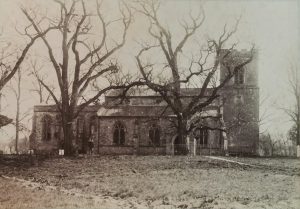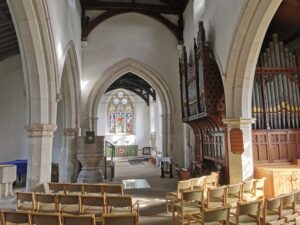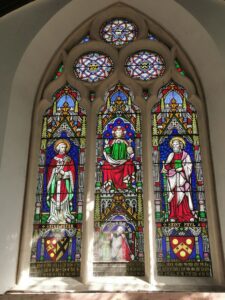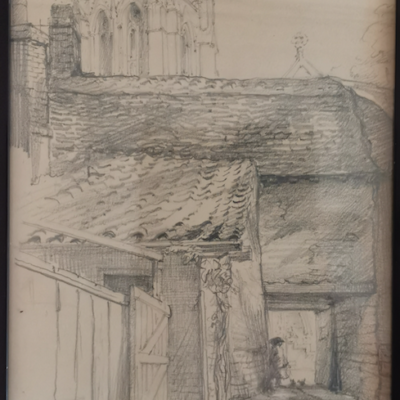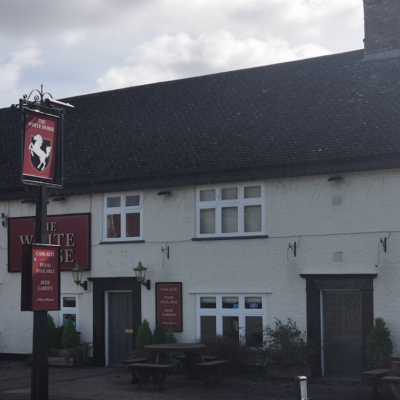Search by topic
- archaeology
- architecture
- bricklayer
- Building of Local Interest
- carpenter
- church
- crime
- dressmaker
- fire
- Great Eastern Railway
- listed building
- medieval
- oral history
- Public House
- Rattee & Kett
- Religious House
- Roman
- scholar
- school
- Then and Now
- tudor
- women
- work
- world war one
- world war two
Search by text
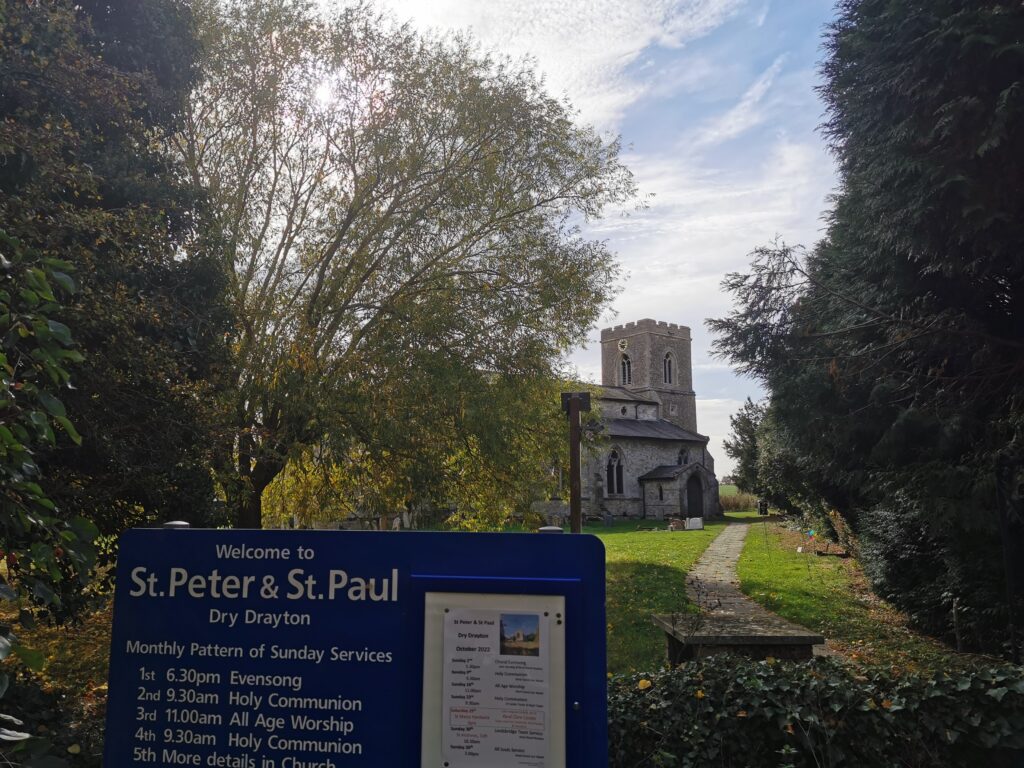 St Peter and St Paul, Dry Drayton (RGL 2022)
St Peter and St Paul, Dry Drayton (RGL 2022)St Peter and St Paul, Dry Drayton
History of St Peter and St Paul
Listed Building
Parish Church. Late C13 West tower, late C13 and C14 nave arcades, substantial C19 restorations including the rebuilding of the chancel in 1851 and the west tower restoration of 1874.
Information from ‘Gallows Piece to Bee Garden- Millennium History of Dry Drayton’
Richard, son of Asgard, priest (date unknown)
William de Laurent, priest circa 1159
Adam the Clerk, priest circa 1175
circa 1200: small stone building on site
John le Moyne, priest, pre 1272
Michael de Burwell, priest, circa 1280
John de Asfordeby, priest (1282 – ?)
C13th: tower and south aisle added
Waler de Barnton, rector (1320? – 1340)
C14th: north aisle
1348 Agatha de Staunton created chantry chapel in church; nothing remains
John Ward of Baston, rector (1340 -)
John de Hilton, rector (1346-1349)
John Baston (1349-?)
1353 chapel dedicated to St Mary endowed by rector, John de Baston, where organ now stands
Henricus de Thorp (c.1370-1375)
Thomas de Novo Mercato M A (?-1376). He was a recognized mathematician and astronomer with a number of manuscripts attributed to him.
John de Aukeland de Crallford (1376-?)
Simon Salle (1379?-1402)
Hugo Lancastre (1402?-1405)
Richard Burgoin (1406-1434?)
Walter de Baston (1434-1435)
William Spalding (1435-1448)
John Wright MA (1448-1458)
Robert Wright (1458-1459)
John Gyles (1459-1464)
Ralph Pynchbek B D (1464-?)
Thomas Hutton (?-1494). He was a very busy man who held a number of benefices and several roles in public life.
Andrew Benstead M A (1494-1517)
Thomas Baghe B D (1517-?)
Thomas Heritage (1532-1537?)
Richard Manchester (1537?-1540). He was the last Roman Catholic priest.
John Clevour (?-1567)
William Fayreleigh (1567-1570) In 1568 he charged with adultery with Agnes laker. He admitted guilt but would not perform penance so was excommunicated. He changed his mind though, gave £6 to support two poor scholars at Jesus College, his penance was commuted and he married – a Margareta Gyfford in 1569.
Post Reformation: Hutton family took over chantry chapel of St Mary and the Hutton brass was placed here. The brass is assumed to represent Thomas Hutton.
Richard Greenham (1570-1591) became minister for about 20 years. He was a distinguished Puritan scholar from Pembroke College.
The surviving institution of the ‘Granary Fund’ originates from Greenham’s initiative one years after a bad harvest to persuade yeoman farmers to sell their grain to the common granary in the village at the lowest price so that the poor could afford to buy it. In modern times, the Granary Fund is the collection taken at Christmas to fund Third World projects. The silver Communion cup and paten dated 1588 with the initials RG are on permanent loan to the Fitzwilliam Museum.
Richard Warfield (1592-1619) followed Greenham as minister.
John Harrison BA (1620-1631/2)
Edward Augier MA (1633-1665) In his time the altar steps and rails were demolished.
1662 Visitation at which the two churchwardens William Rose and Henry Molley worked hard to show that the Dry Drayton was a model village. The minister was Edward Au(n)gier.
Zacchaeus Peppin (1666-1675)
Henry Radley BA (1676-?)
1676 the great Cottenham fire. The appeal at Dry Drayton raised £3 6s.
1678 appeal for St Paul’s cathedral raised just over £1.
Richard Barnard BA (1680)
John Peachall MA DD (1686-1689): He had a reputation as a heavy drinker and numbered Samuel Pepys among his friends. See Pepys Diary 26.2.1660.
John Mandeville MA DD (1690-1691)
Gabriel Quadring MA DD (1691-1714)
Arthur Ashley Sykes MA DD (1714-1718)
Thomas Hayley MA DD (1718-1724)
John Peter Allix MA DD (1724-1725)
Henry Haslop (1725-1728) became rector. Described as ‘the greatest bigot and party man.’
William Hetherington MA (1728-1753). He inherited his brother’s estate and his sister, Elizabeth, left £140 in her will towards a school for poor children in Dry Drayton.
John Craddock MA DD (1753-1755)
Richard Bullock MA DD (1755-1784)
Samuel Smith [I] MA LLD (1785-1808)
Samuel Smith [II} MA DD (1808-1829) & (1831-1841): he inherited the lordship of the manor from his father
Samuel Smith faced a considerable amount of unrest i the village at this time. In 1816 his gamekeeper John Hazlewood was assaulted.
Samiel Smith [III} MA (1829-1831)
William Smith MA (1841-1868): in 1851 he claimed an average attendance at morning services of 70-100 and 130-190 in the afternoons. Sunday school attracted some 30-40 children.
William Mumford Frost MA (1869-1873)
Francis Augustus Walker DD (1873-1880): he was a keen entomologist. He wrote ‘A history of the parish of Dry Drayton’ in 2 volumes.
Arthur Wolfe Hamilto-Gell, Mus B (1881-1887): in 1881 he funded the installation of the organ.
Francis William Henstock LLM (1887-1893)
Richard Winkfield MA (1894-1929)
William Wycliffe Lucas MA LLM (1932-1935)
Alan Armstrong BA (1935-1949(
G B Whitaker (1951-1962
Hugo de Waal (1964-1974). He was the last rector.
Contribute
Do you have any information about the people or places in this article? If so, then please let us know using the Contact page or by emailing capturingcambridge@
License
This work is licensed under CC BY-NC-SA 4.0








